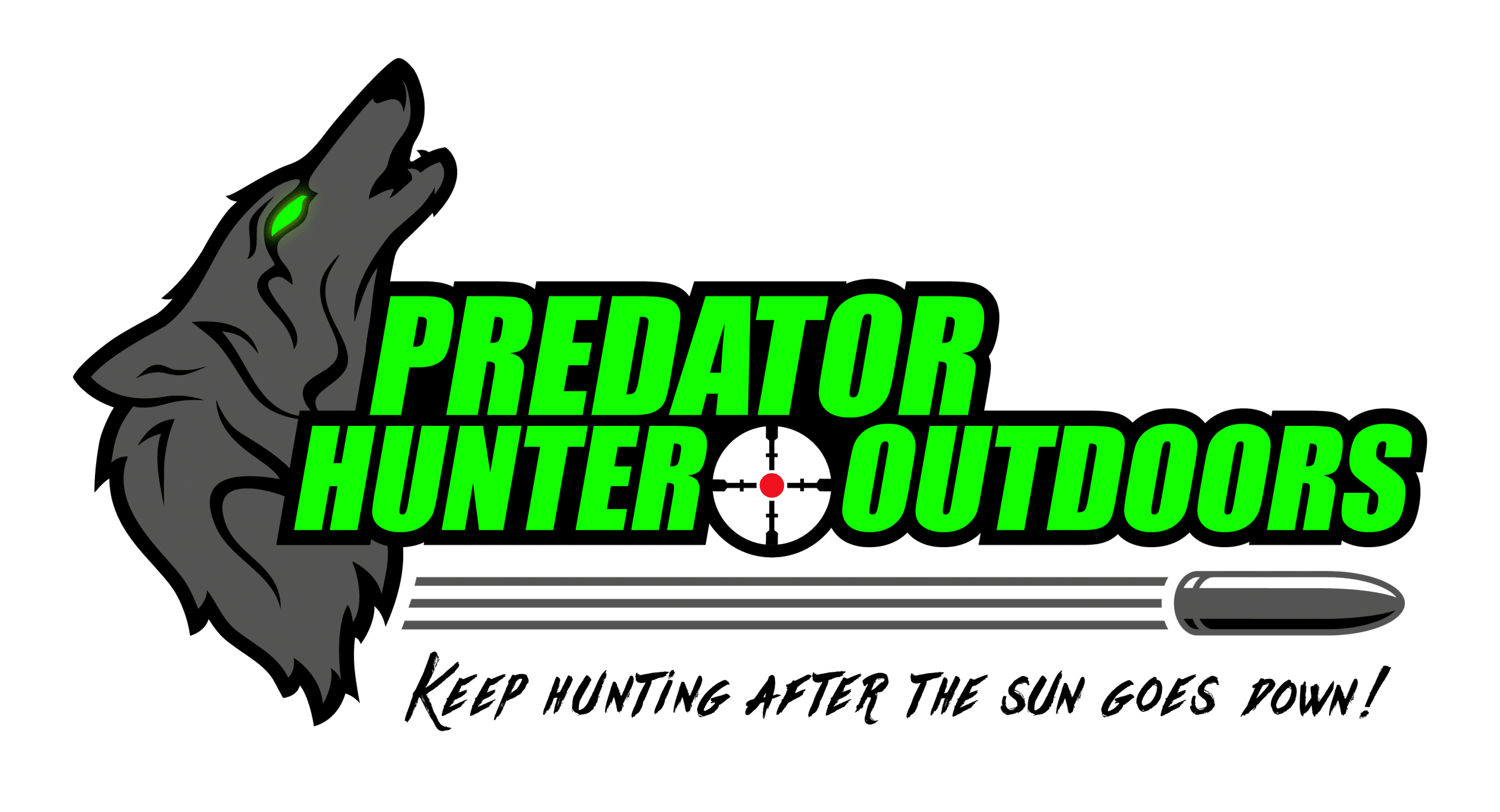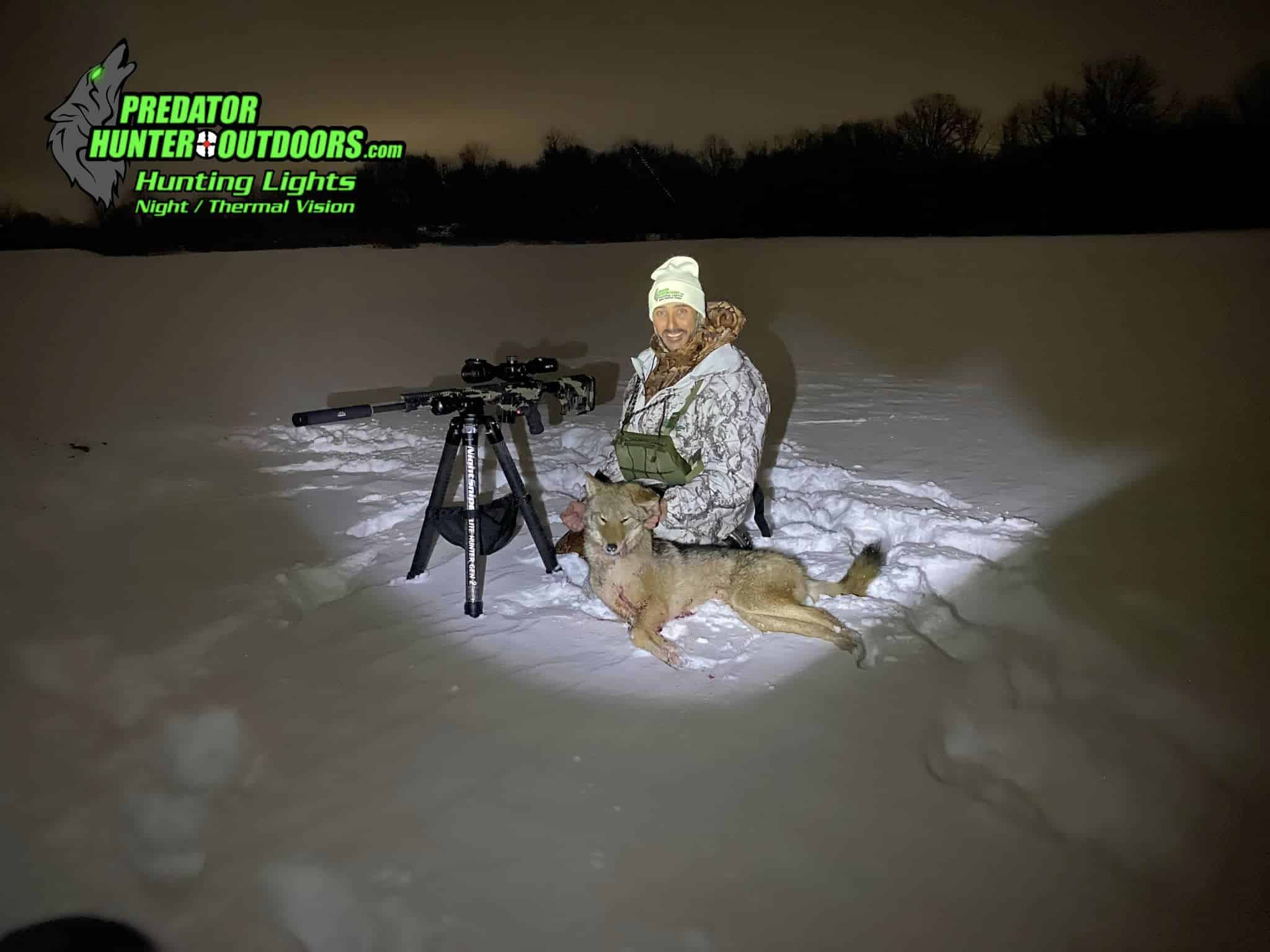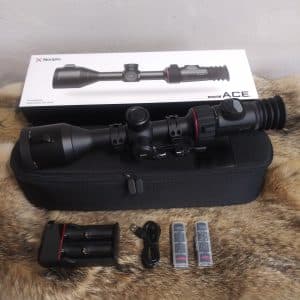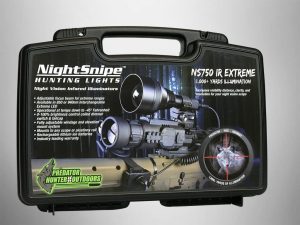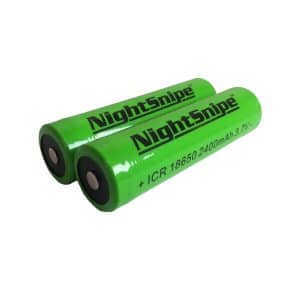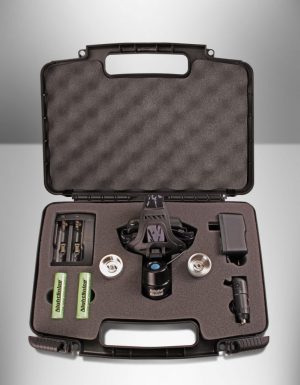Coyote Hunting Regulations
In Michigan, coyotes can be hunted from July 15 to April 15; this is a change from 2023 instead of year-round. This means the season closed on April 16, 2024, and will reopen on July 15, 2024. You can hunt during the day or night with what is called a “BASE” hunting license. However, there is a closed season for coyote hunting at night which varies annually from year to year and focuses around the firearm deer hunting season.
Hunting methods include firearms and archery equipment. Hunters are also required to follow state regulations in terms of which caliber firearms are allowed to be used for day and night hunting. There are also caliber restrictions for state / federal lands when coyote hunting in Michigan. It’s important to note that baiting can also be used to attract coyotes. You can also use a variety of electronic calls and decoys. Additionally, the hunting of coyotes near residential areas and other developed areas may be restricted to ensure public safety.
Please check out the link below for more information on hunting dates and regulations.⬇️
Coyote Hunting Equipment
Coyote Hunting in Michigan has become extremely popular over the last few years and the equipment being used has greatly increased the success of hunters at night. Naturally, predators such as coyotes and fox prefer to hunt and dwell under the cover of darkness thus being undetected by other animals and humans. That being said, predators or more apt to come to your predator call during hours of darkness.
Thermal
Thermal scopes and scanners have been the “go-to” method for detecting predators and all things living at great distances. Many of the most common brands that are being used by night-time predator hunters include Pulsar, InfiRay Outdoor/iRayUSA, AGM Global Vision, ATN, Bering Optics, N-Vision, RIX, Predator Thermal Optics and NightSnipe. All of the mentioned brands are preferred equipment and have proven their worth in the field for the hunter/consumer over the years.
Thermal devices are undoubtedly the most effective tools for detecting predators or anything else living for that matter. A good majority of the thermal devices available to the consumer are capable of detecting heat sources from human/deer/coyote size game at distances exceeding 600-1500+ yards. On the smaller spectrum, thermal scopes/monoculars are capable of detecting mice and other small critters running across fields, and up and down trees at distances of more than 100 yards in pure darkness.
Thermal technology cannot be beat when it comes to detecting game as thermal detects heat from all things living. When looking threw a thermal scope or monocular, anything that gives off heat will give a white glow which naturally jumps out at the viewer. Everything else that does not give off heat will be viewed as black or gray. While thermal cannot see threw glass or solid objects, it will detect every heat source as long as there is a visual/unblocked sight plane to the object.
That leads us to the next available option for night hunting… Night Vision!
Night Vision Scopes
As mentioned above… nothing beats a thermal for detecting heat and game animals… however, detection and recognition are two different specifics. Yes, a thermal will tell you that there is an animal standing along the wood line 350 yards out from you, however, it may not be enough recognition to tell you 100% if you’re looking at a coyote, fox, the neighbor’s dog, or a small deer.
This is where night vision scopes excel over thermal if you intend to know 100% what game you’re getting ready to pull the trigger on. The last thing someone wants to do is shoot an out-of-season fox, small deer, or worst case scenario, someone’s beloved pet.
While many hunters prefer to hunt with a thermal scanner and thermal weapon scope for the ultimate / detection/shot opportunity, many also prefer a thermal scanner and a night vision scope. A thermal scanner tells you when a game animal is present, while a night vision scope tells you exactly what you’re looking at. Many also prefer the “real world view” of a night vision scope over a thermal for the added detail it presents. Night vision can best be described as a view that resembles a black-and-white television picture. All of the details of branches, trees, brush, rocks, and specific details of animals are present with night vision. Thermal does not give as much detail, but thermal will also detect things that night vision cannot. The thermal scanner does the detecting work while the night vision shows the specifics.
How night vision works:
Night vision works by utilizing ambient light from the stars and or moon if available, or IR (Infrared) light which is produced from an IR Illuminator such as those developed by NightSnipe Hunting Lights. 99% of hunters rely on the use of an IR illuminator as the IR light allows hunters to see at distances of 500-600-700 yards.
An IR illuminator resembles a flashlight but the internal components emit an IR wavelength of light. IR light is invisible to all things living, the only thing that sees the IR illuminated beam is the night vision scope. This allows for complete concealment when hunting predators at night. One of the most popular IR Illuminators is the NightSnipe NS750 IR Illuminator. The NS750 is one of the more compact / lighter IR illuminators available all while exceeding the distances of most other brands that are larger and much heavier.
Hunting Lights
As predator hunting became more popular, the fact that predators were more mobile at night was nothing new. The predator hunters wanted to extend their season into the night and up their chances of becoming successful. With that being said, a whole new world of predator hunting at night was starting to become the more popular option. The early stages of nighttime predator hunting consisted of spotlights and car batteries….or anything one could rig up to work. White lights were originally used, but success was limited. As time went on and science came into play, red light became the preferred light spectrum as red is the least visible color to all things living.
Equipment technology was slowly advancing in the field of predator hunting at night, however, the curiosity and innovativeness of those dedicated hunters were at the forefront of a predator hunting equipment boom! Those same few hunters that were coming up with new night hunting rigs, were the same that were making advancements in developing new equipment to manufacture for the nighttime predator hunter.
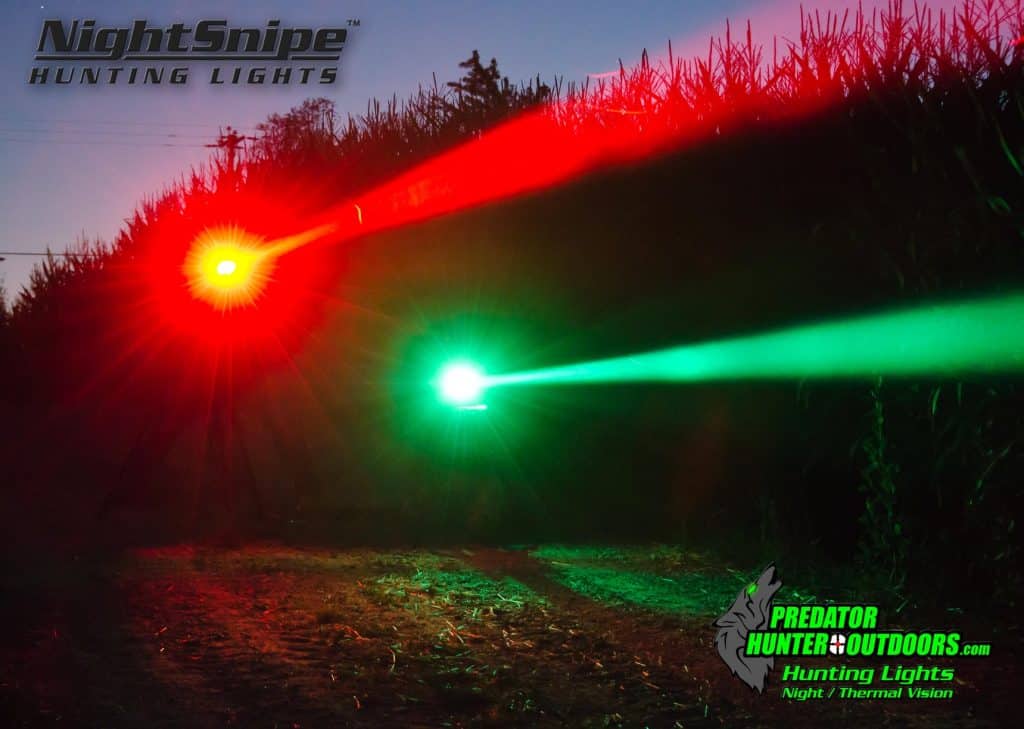
One of the leaders in the night hunting lighting game is NightSnipe Hunting Lights made by Predator Hunter Outdoors based out of Attica, Michigan. Some of the first hunting lights to use the new LED technology were developed and manufactured under the NightSnipe name. Since the early stages, the lighting game technology and effectiveness have increased greatly. The modern technology that Predator Hunter Outdoors has implemented into their line of NightSnipe Hunting Lights allows the hunter to view/shoot the game at hundreds of yards with a traditional glass / daytime rifle scope. The same technology has been implemented into their IR Illuminators which allows the modern-day night vision hunter to see at extreme distances.
Predator Calls
The last decade in the predator hunting world has had major advancements in the technology being used in a variety of equipment including game calls. Game calls in the early stages were simply mouth calls which utilized a thin reed to produce different pitches of sounds when blown threw. Mouth calls are still being utilized in this modern day and age for those who prefer to be a bit more personally involved in the calling of the predators they peruse. Mouth calls also allow the hunter to have more control of the exact tones, volume, and overall trickery of wary predators.
Electronic Calls
While the mouth call is still utilized by some, the electronic game call is now the preferred and most utilized tool for actually calling predators. The ease of use, volume, tones, sequences, and variety all at the fingertips is a deadly combination for calling predators. Some of the more popular brands include ICOtec, FOXPRO, and Lucky Duck. Many prefer the ICOtec brand for ease of use, remote distance, remote layout, speaker volume and quality as well as overall quality and reliability. Hunters also enjoy the ability to run an electronic decoy directly on the call which can also be controlled directly from the remote.
Hunting Tripods
Predator Hunting at night has allowed the predator hunter to get away with a lot more in terms of concealment. The cover of darkness allows for the nighttime predator hunter to ultimately set up in the middle of fields, along tree lines, and in places they would normally never get away with during the day, all while in a standing position. That being said, the hunting or shooting tripod has gained extreme popularity over the past few years for ease of use, stability, and overall visibility.
However, the tripod itself is only part of the necessary equation with this style of hunting. A ball head or level head is needed to complete the shooting system. The ball head or level head is screwed directly to the stud on the tripod and is ultimately what gives the ability to lock your firearm in place or allow for complete rotation in every direction for precise shot placement. The carbon fiber NIghtSnipe Hunting Tripod line is one of the best in the industry and gives a large variety in terms of stability, locking power, and price. Most hunting tripods available are capable of collapsing down low enough for ease of use while laying, sitting, kneeling, and most importantly, standing.
Setting up for Success
Coyote Hunting in Michigan is typically done during the colder months when the hides are prime for harvest. However, as the sport becomes more popular, hunters are extending their seasons into the spring and summer months. Traditionally, hunting coyotes during the day requires the hunter to be fully camouflaged to avoid being detected as coyotes have excellent eyesight. Setting up in tree lines, brush piles, hay bales, and other visual breakups are ideal for keeping concealed.
The use of a decoy during daylight hunting hours is also a great tactic to implement as this will give the coyotes a visual to focus on. Most of the electronic calls available come with an electronic decoy that can be attached directly to the caller and also controlled with your remote. This adds to the realism of the calling scheme as the sound is coming directly from the same location as the decoy.
Setting up at Night
Coyote Hunting in Michigan at night is a bit laxer as the cover of darkness helps to conceal the hunter from being detected. Additionally, having adequate cover to set up in or near is less critical. Setting up in the middle of fields, along tree lines, ditches, and other less visually protected areas is acceptable and the rate of success is positive.
One critical thing to keep in mind when coyote hunting during the day or night is wind direction. Coyotes rely heavily on their superb sense of smell and utilize it to their full advantage. Setting up with the proper wind direction and the ability to see in multiple directions will increase the odds of success.
The modern-day night-time predator hunter has a variety of tools available to help become successful in this sport. However, the best tool is experience, and that comes with time.
Predator Hunter Outdoors offers a wide range of thermal, night vision, hunting lights, shooting tripods, calls, sights, mounts, accessories, and equipment advice to help make your coyote hunt successful!
-
Product on saleNocpix LUMI L35 Thermal Monocular (Free 2x 18650 Batteries and 4-port Charger included!) – Demo Unit!Original price was: $1,900.00.$1,500.00Current price is: $1,500.00.
-
Product on saleNocpix ACE H50 Thermal Weapon Sight with Ocular Magnifier 3X 640×512 50mm (Free 2x additional 18650 Batteries and 4-Port Charger!) – Demo Unit!Original price was: $4,750.00.$3,900.00Current price is: $3,900.00.
-
Product on saleNocpix ACE L35 Thermal Weapon Sight with Ocular Magnifier 3X 384×288 35mm (Free 2x additional 18650 Batteries and 4-Port Charger!) – Demo Unit!Original price was: $2,750.00.$2,250.00Current price is: $2,250.00.
Coyote Hunting Tips
Here are a few key things to know when going coyote hunting:
Laws and regulations: Be aware of the hunting laws and regulations in your area, including hunting seasons, bag limits, and required licenses and permits.
Weapon choice: Choose the appropriate weapon for hunting coyotes, such as a rifle, shotgun, or bow. Consider factors like range, accuracy, and personal preference.
Hunting gear: Essential hunting gear for coyote hunting includes appropriate clothing, boots, backpack, and hunting blinds.
Call selection: Coyotes can be called in with a variety of calls, including electronic calls, hand-held calls, and mouth calls. Experiment with different types of calls to determine which works best for you.
Scout the area: Scout the area you plan to hunt ahead of time to look for signs of coyote activity, such as tracks, scat, or vocalizations.
Safety: Always prioritize safety while hunting, including wearing brightly colored clothing and following safe firearms handling practices.
Ethical hunting: Follow ethical hunting practices, such as only shooting coyotes within range and avoiding non-target species.
Note: This list is intended for informational purposes only and is not a substitute for seeking local advice and guidance from experienced hunters and wildlife experts.
